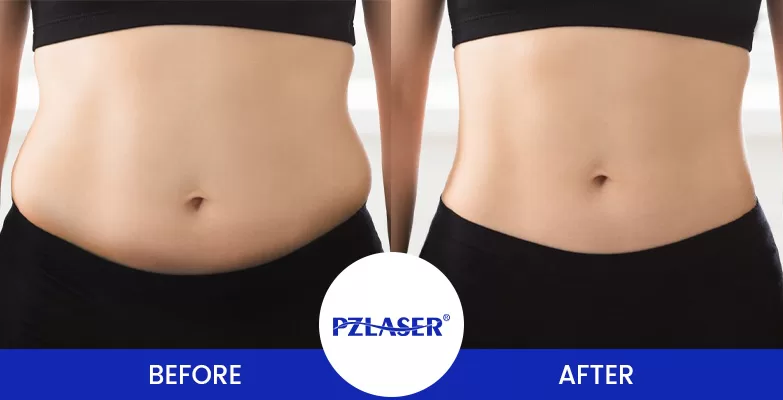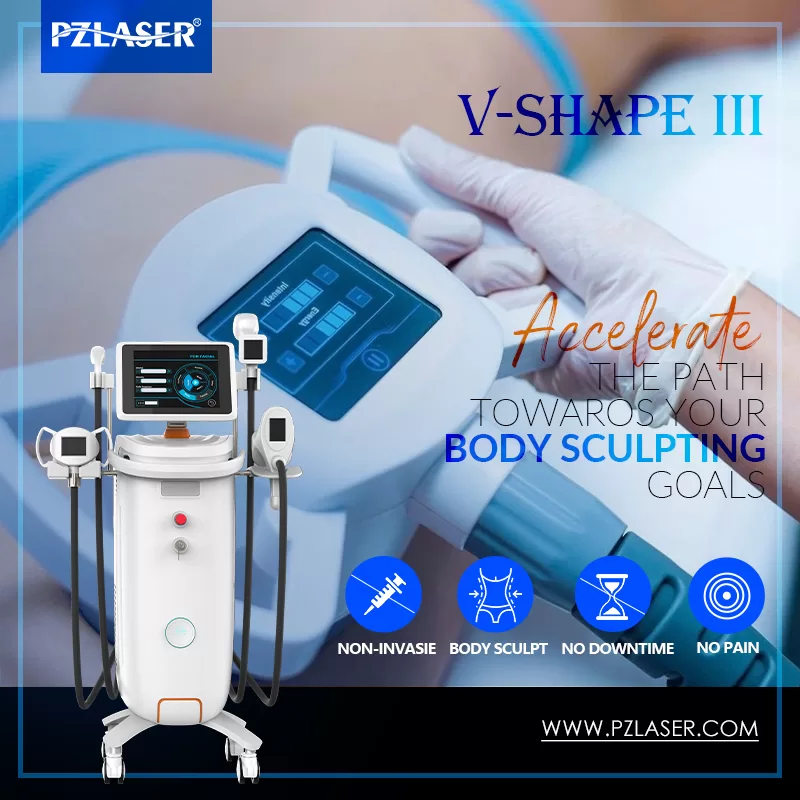Introduction
In the ever-evolving world of body contouring, ultrasonic cavitation stands out as a non-invasive and effective way to reduce stubborn fat deposits without needles, incisions, or downtime. But one key question persists: how often can you do cavitation to maximize results while ensuring safety? Whether you're a clinic owner, aesthetician, or an individual exploring at-home treatments, understanding the right frequency is key to success. In this comprehensive guide, we’ll delve into optimal treatment schedules, how cavitation works, what affects session intervals, and how you can achieve visible, long-term results with the right plan and the right technology.
What Is Cavitation and How Does It Work?
Cavitation or ultrasonic cavitation is a body-sculpting technique that uses low-frequency ultrasonic waves to penetrate the skin and disrupt fat cell membranes. When these ultrasound waves hit the fat cells beneath the skin, they cause the fat to break down into a liquid form. This liquified fat is then metabolized naturally by the body and eliminated through the lymphatic system.
Unlike liposuction, cavitation is completely non-invasive, involves no recovery time, and can result in noticeable circumference reduction. It’s often used to target common problem areas like the abdomen, thighs, flanks, and arms. Clients report smoother contours and visible inch loss after just a few sessions.
The main cavitation benefits include:
- No anesthesia or needles
- Painless and comfortable treatment
- Improves skin texture and circulation
- Supports natural detoxification
Who Can Perform Ultrasonic Cavitation?
In clinical settings, ultrasonic cavitation treatments should be performed by licensed estheticians, medical professionals, or trained body contouring technicians. These professionals are trained to operate cavitation machines, assess the client’s needs, and determine suitable treatment areas and frequencies.
For home use, a growing range of ultrasonic cavitation machines is now available to consumers. While convenient, they require caution and adherence to the device’s safety instructions. Always choose FDA-cleared or CE-certified models and avoid excessive use.
Training and experience are key. Incorrect usage, especially with at-home devices, can lead to suboptimal results or mild side effects.
How Often Can You Do Cavitation Treatments? What Experts Recommend
| Treatment Area | Frequency | Sessions Required | Single Session Duration |
| Stomach/abdomen | 1 to 2 sessions per week, every 3-7 days | 6 to 12 sessions | 20-40 mins |
| Thighs and buttocks | 1 to 2 sessions per week, every 3-7 days | 6 to 10 sessions | 20-40 mins |
| Arms | 1 to 2 sessions per week, every 3-7 days | 4 to 8 sessions | 20 mins |
| Chin or face | 1 to 2 sessions per week, every 3-7 days | 3 to 6 sessions | 20 mins |
How Frequently Should Cavitation Be Performed?
Experts recommend 1 to 2 sessions per week, with a minimum of 72 hours between treatments, usually 3-7 days. Considering the size of the treatment area, you can consult the physician for evaluation and have more sessions appropriately based on your own metabolism. Because the body needs time to process the waste and flush it out, this interval allows the body enough time to metabolize and eliminate disrupted fat cells via the lymphatic system. Overdoing sessions can overload your detox systems and potentially reduce the effectiveness of the treatment.
How Long Is a Typical Cavitation Session?
Each ultrasound cavitation treatment usually lasts 20 to 40 minutes per treatment area, depending on the area to be treated. Larger areas like the abdomen, thighs, and buttocks may require 20 to 40 minutes, while smaller areas like the arms or chin may only need 20 minutes. Experts recommend that a single cavitation treatment last no longer than 40 minutes. Combining cavitation with RF (radiofrequency) or vacuum therapy can extend the session time but may enhance the final result.
What's the Ideal Interval Between Two Sessions?
Maintain at least a 3-day gap between sessions, and 3-7 days is optimal. This prevents overburdening your body’s detoxification process and gives tissues time to recover. Back-to-back or daily cavitation, or repeated treatments of the same area, is not advisable and may lead to fluid retention, inflammation, or diminished results.
How Many Treatments Are Needed by Area?
While individual results vary, larger or denser fat deposits may require more treatments for visible cavitation results. Large areas, such as the abdomen, require 6 to 12 sessions, thighs and buttocks require 6 to 10 sessions, and smaller treatment areas, such as the arms and face, require 8 to 12 sessions. Here’s a general guide based on clinical experience:
Can You Do Cavitation Every Day?
No. Daily cavitation treatments are not safe. Daily exposure to ultrasonic energy may cause tissue fatigue, fluid buildup, and disrupt your natural fat elimination cycle. Respect your body’s biological rhythm: stick to the 72-hour rule.
Home Use Cavitation Devices: How Often Can You Use Them?
At-home ultrasound cavitation machines are designed for gentler, user-friendly use. It's required to follow the treatment frequency and observe the necessary precautions. The general recommendation is 1 to 3 sessions per week, with at least 2 days or more apart, so that the body can metabolize and remove the fat.
While these devices are less powerful than clinic-grade machines, improper use or excessive sessions can still lead to irritation or ineffective results. Always:
- Follow manufacturer guidelines
- Avoid treating the same area repeatedly within 48 hours
- Pair treatments with hydration and light activity
- Place the machine correctly on the treatment area and ensure full contact with the skin, avoiding sensitive areas
- Follow the post-treatment care, moisturize, and protect against the sun
How Long Does It Take to See Results from Cavitation?

Some cases show that certain individuals feel improvements immediately, but most users begin to notice changes after 3 to 6 sessions, especially when combined with proper hydration and exercise. Everyone’s metabolism and lifestyle differ, so results may vary. However, the most visible effects typically appear after completing 6 to 12 sessions, which is closely related to the frequency and duration of ultrasonic cavitation treatments.
Several factors influence how quickly results become noticeable, including the treatment frequency, number of sessions, and duration of each session. Personal health conditions, treatment goals, and the body’s response to cavitation also play a role. Consider all these aspects to determine the optimal usage cycle.
To better track progress, it is recommended to take ultrasonic cavitation before-and-after photos, measure the circumference of the treated areas (not just body weight), and monitor how your clothes fit over time.
Possible Risks and Side Effects of Cavitation Treatments
Ultrasonic cavitation is generally safe and well-tolerated. However, some side effects may occur. Understanding these risks and side effects can help you prevent them.
Common, temporary effects:
- Redness or warmth in the treated area
- Mild swelling
- Slight bruising
- Headache (from fat metabolite release)
Rare but possible:
- Water retention
- Skin sensitivity or itching
- Dizziness if not hydrated
Mitigate risks by:
- Drinking 2–3 liters of water daily
- Following provider recommendations
- Choosing certified professionals and devices
Cited from WebMD, it is not recommended for patients with inflammation, open wounds, circulatory or coagulation disorders. People with any type of heart disease, metal implants, breastfeeding women, and pregnant women should avoid this treatment.
Ideal Cavitation Treatment Plan: Duration, Frequency, and Maintenance
A well-structured recommended treatment plan ensures both safety and efficiency:
- Total sessions: 6 to 12, depending on the area
- Interval: 3–7 days between sessions
- Maintenance: 1 session per month after the initial course
To maintain results, it's important to drink plenty of water before and after each session, follow a low-carb, balanced diet, and engage in light cardiovascular activity such as walking or cycling to support fat metabolism and lymphatic drainage.
How to Maximize Safe and Effective Results from Cavitation Sessions
For best outcomes, integrate these pre- and post-care steps:
Before Treatment:
- Drink 0.5–1 liter of water 1–2 hours prior
- Follow a low-carb, balanced diet
- Avoid alcohol, fatty meals, and caffeine
- Wear loose-fitting clothing
After Treatment:
- Continue hydration by drinking at least 2 liters of water per day
- Do light exercise to boost lymphatic drainage
- Keep a balanced diet, and avoid high-fat meals and processed foods
- Rest and sleep well, try to avoid stress, as stress can hinder fat loss
- Consider combining with RF or vacuum therapy for added skin tightening
PZLASER's V-Shape III Cavitation Machine: Safe, Versatile, and Results-Driven

For professional clinics and medspas, the V-Shape III Cavitation Machine by PZLASER is a powerful and safe solution for body contouring. It combines 5 technologies of Ultrasonic Cavitation, Multi-Polar RF, infrared light energy, mechanical rollers, and Vacuum Suction, which offers a comprehensive solution for body contouring. It includes intelligent frequency control to ensure safe and effective session scheduling, with adjustable treatment protocols customized by area, fat depth, and individual client goals. A user-friendly touchscreen interface and ergonomic 10 different handpieces make operation smooth and effortless for professionals.
The V-Shape III brand offers numerous benefits for clinics, including shorter session times with faster, visible results. It effectively reduces excess fat while simultaneously tightening the skin, ensuring a more sculpted appearance. With its reliable, consistent performance and CE certification, it’s a trusted solution suitable for professional use worldwide. Professionals worldwide trust PZLASER factory for non-invasive fat reduction, skin rejuvenation, and body sculpting, all with industry-leading safety standards.
FAQs About Cavitation
11.1 Can Cavitation Cause Cancer?
No. Cavitation uses non-ionizing ultrasonic waves, which do not alter DNA or pose cancer risks.
11.2 Is It Safe to Do Cavitation at Home?
Yes — if using CE-certified or FDA-cleared machines with proper intervals.
11.3 Is Cavitation Suitable for All Ages and Body Types?
Generally safe for adults aged 18–65 with localized fat. Not advised for pregnant individuals or those with pacemakers.
11.4 Does Cavitation Tighten the Skin?
Cavitation alone offers mild firming. For visible tightening, combine with radiofrequency (RF) therapy.
11.5 Can I Treat Multiple Areas in One Session?
Yes, but keep each area within 20–40 minutes. Prioritize based on fat volume and skin tolerance.
11.6 When Can I Resume Normal Activities After Treatment?
Immediately. There’s no downtime.
Conclusion
The ultrasound cavitation treatment is a safe and effective procedure, which depends not only on the technology used but also on how strategically it's scheduled. Stick to 1–2 sessions per week, spaced by at least 72 hours, for optimal fat elimination and skin benefits.
For superior results, investing in the V-Shape III Cavitation Machine by PZLASER is a trusted choice for body sculpting professionals across the globe. Take the smart route to body confidence with consistency, care, and cutting-edge equipment.






